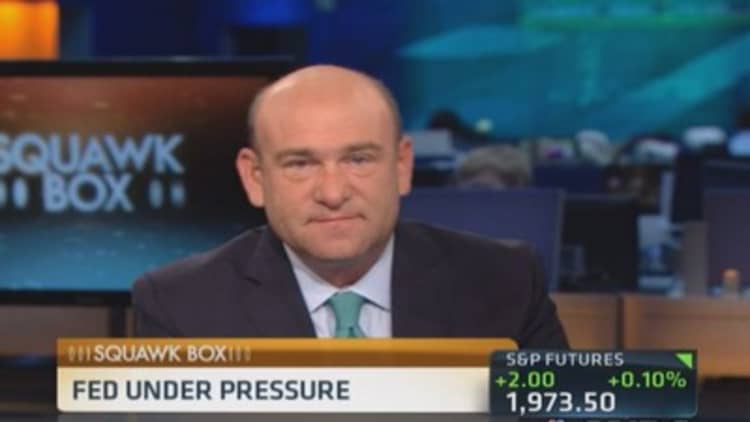
Democrats don't have a lot of good news to hold onto when it comes to the upcoming midterm elections. Recent forecasts suggest there is at least a 60 percent chance the GOP will pick up the six seats it needs to take the Senate. Republicans are almost certain to gain seats in the House.
And President Barack Obama's approval ratings continue to hit new lows with a survey over the weekend, showing just 42 percent of voters think he can manage the government effectively.
The recent run of global crises from Ukraine to Gaza to Iraq has also dented Obama's standing. And midterm elections are almost always referendums on the party controlling the White House.
But there is one wild card that could still boost Democrats' chances in the fall and possibly hold off a full Republican takeover of Congress: the U.S. economy.
This week brings three huge events that will tell us a great deal about what the economy will look like heading into the fall campaign and whether Democrats can count on people feeling better about their own situation.
The first critical data point comes Wednesday with the first look at second-quarter gross domestic product growth. Expectations are for a gain of at least 3 percent, reversing the first quarter's disastrous 2.9 percent contraction.
Even 3 percent will just get us to flat for the year, but it would indicate the first quarter was in fact an outlier driven by terrible weather and inventory reductions. It would also suggest that the economy is still on pace for slightly above-trend growth the rest of the year.
Read MoreUS pending home sales unexpectedly fall in June
Nobody votes on GDP numbers, but they do vote on a general sense that the economy is expanding and businesses are hiring and growing rather than continuing to cut costs and jobs.
The second big moment comes later in the day on Wednesday with the Federal Reserve's latest statement on interest rate policy. Fed Chair Janet Yellen has no press conference planned, and the FOMC statement will likely not break much new ground or alter the pace of asset-purchase tapering.
But there could be one or two dissents from inflation hawks this time around arguing that the Fed needs to step up its timetable for hiking rates as the economy approaches a new version of full employment, and inflation edges higher.
Read MoreHere's what may matter more than jobs and earnings
This would be a double-edged sword for Democrats, who would embrace any signs of an economy growing more swiftly but don't want to see the Fed rhetorically trim the sails too soon and slow down the stock market and economic growth.
The final big number comes Friday, as Congress prepares to head out of town for the five-week summer recess, and the Labor Department releases the July jobs report. Expectations are for another healthy gain, this time 231,000 jobs, down just slightly from June's strong 288,000. The jobless rate is expected to remain at 6.1 percent as discouraged workers come back into the labor force, offsetting the number getting new jobs.
Those kind of consistent numbers would indicate an economy that has begun to hit a decent stride and should begin to budge poll numbers suggesting Americans view the economy as getting worse, not better.
Read More
Of course, to really budget those numbers, the jobs report would have to finally show a more rapid pickup in wages, which are expected to again grow by just 0.2 percent.

Still, even with wages growing only modestly (and not really keeping up with inflation), the economic picture could prove bright enough by November to help lift marginal Democrats in red states such as North Carolina and Louisiana.
On this score, Democrats can also point to strong employment data at the state level. Every state in the union now has a lower unemployment rate than it did during the worst of the recession and there are no longer any states with jobless rates over 8 percent. Mississippi and Rhode Island are the highest with rates of 7.9 percent.
Read More
That could help highly vulnerable Democratic Sen. Mary Landrieu in Louisiana, where the jobless rate is just 5 percent, more than a point lower than the national rate. In New Hampshire, where Democrat Jeanne Shaheen is on the GOP target list, the unemployment rate is only 4.4 percent. Still, this measure also cuts against Democrats in states with jobless rates over the national figure, including Arkansas and Alaska.
Overall, the week about to unfold—the last before the political world mostly goes dark for the August recess, and President Obama heads off on vacation—will give us a good sense of whether Democrats will be able to stave off a massive wave this November or will find themselves out of power on both sides of Capitol Hill.
—By Ben White. White is Politico's chief economic correspondent and a CNBC contributor. He also authors the daily tip sheet Politico Morning Money [politico.com/morningmoney]. Follow him on Twitter @morningmoneyben.


